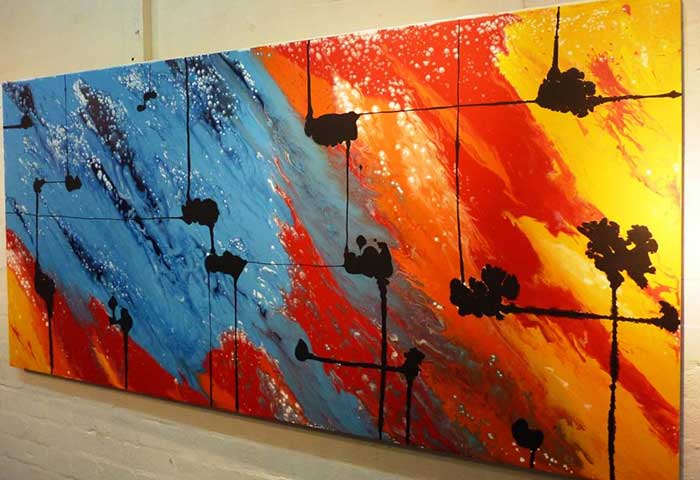[ad_1]
Fabric painting is definitely one of the interesting things to do for persons who enjoy fashion and especially clothing.
This painting art though is not the same with dyed fabrics and the outcomes are totally different as well.
It became a new trend in the clothing line primarily because it is more convenient to use than the dyes as it does not require too heating or steaming.
In fact, most fabric paints only require ironing to keep it bonded permanently on the fabric. Fabric paints containing non-toxic substances as tested and certified are definitely safe to use even for children.
Unlike dyes, fabric paints have a variety of effects that they may be metallic, opaline, opaque or transparent which likewise create a distinct texture only fabric paints can produce.
In order to achieve the fabric paint result that one wants, here is some of the basic fabric painting techniques commonly applied.
Dark background fabric painting
One of the main concerns of many with respect to painting in fabric is how to cover up the color of dark fabrics for most of the fabric paints are translucent.
It is advised that one must pick up opaque fabric paint when painting on dark surfaces.
The Alcohol and Salt Effect
The alcohol effect is done by dropping alcohol on the fabric paint in order to produce spots that are light on the inside and dark on the edges.
The salt effect on the other hand is done by sprinkling salt on a moist painted fabric causing the salt to absorb the water in surrounding areas and leased pale sweep spots.
The Closing or Fence Painting
It is a technique produced in a stretched silk outlined with design and painting the spaces inside the design with paint with the use of a line drawing material called the water-based resists. The water-based resists outline can be removed through dry clean.
Silk Fabric Painting
Silks are generally very smooth and downy that it is hard for ordinary fabric paints to penetrate on it permanently.
As such, special silk fabric paints are needed to produce paints on silk. After application of silk paint, it must be heated and ironed to make the painting permanent.
Sun painting
This technique is best for transparent fabrics which are usually done by placing items such as cu-outs from aluminum foils, feathers, leaves and other on a moist painted fabric and allowing it to dry.
The exposed areas of the fabric to the sun would suck those wet paints underneath the covered areas which eventually cause the covered area to look paler.
Lastly, one must remember the basic rule that fabric painting requires ironing not steaming. Although heating is required to keep the fabric paints permanent, it is important to know that heating refers to ironing when one speaks of fabric paints.
Steaming on the other hand is referred to when one speaks of fabric dyes. Ironing on fabric paint is done by ironing on the back and not directly on the paint.
It is advisable to set the setting of the iron to cotton and set it for 3- 4 minutes of ironing.
Some manufacturers have special instructions on how to iron and how to wash items with fabric paints. Then it is also advisable to use a cover to protect your iron board from an untoward transfer of the paint to the ironing board.
[ad_2]
Source

